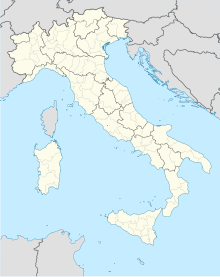Cervia Air Base
Cervia Air Force Base | |||||||||||
|---|---|---|---|---|---|---|---|---|---|---|---|
F-16-ADF of the Italian Air Force | |||||||||||
| Summary | |||||||||||
| Airport type | Military | ||||||||||
| Location | Cervia, Italy | ||||||||||
| Elevation AMSL | 18 ft / 5 m | ||||||||||
| Coordinates | 44°13′27″N 012°18′26″E / 44.22417°N 12.30722°E | ||||||||||
 | |||||||||||
| Runways | |||||||||||
| |||||||||||
Cervia Air Force Base (ICAO: LIPC) is an air base of the Italian Air Force (Aeronautica Militare). It is located in northern Italy, approximately 6 km (3.2 NM) southwest of Cervia, in the province of Ravenna (Emilia-Romagna).
It is the home base of the 5th Stormo Caccia Intercettori, which flies a license-built version of the Lockheed Martin F-16 Falcon. It is also a NATO air base, which hosts deployed aircraft from the United States Air Force, Royal Air Force, and other NATO air forces on a routine basis.
History
During World War II the airfield was used by the United States Army Air Force Twelfth Air Force 79th Fighter Group, flying combat operations with P-47 Thunderbolts. The 79th used the airfield from 20 March until July 1945.[2][3]
Facilities
The airport resides at an elevation of 5 m above mean sea level. It has one runway designated 12/30 with an asphalt surface measuring 3,050 by 45 metres (10,007 ft × 148 ft).[1]
References
- ^ a b Airport information for LIPC from DAFIF (effective October 2006)
- ^
 This article incorporates public domain material from the Air Force Historical Research Agency
This article incorporates public domain material from the Air Force Historical Research Agency
- ^ Maurer, Maurer. Air Force Combat Units of World War II. Maxwell AFB, Alabama: Office of Air Force History, 1983. ISBN 0-89201-092-4.
External links

